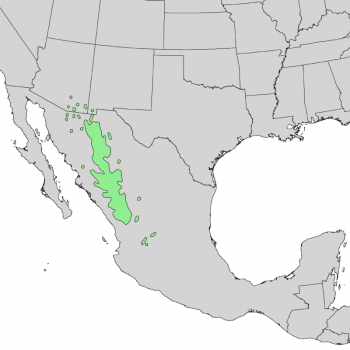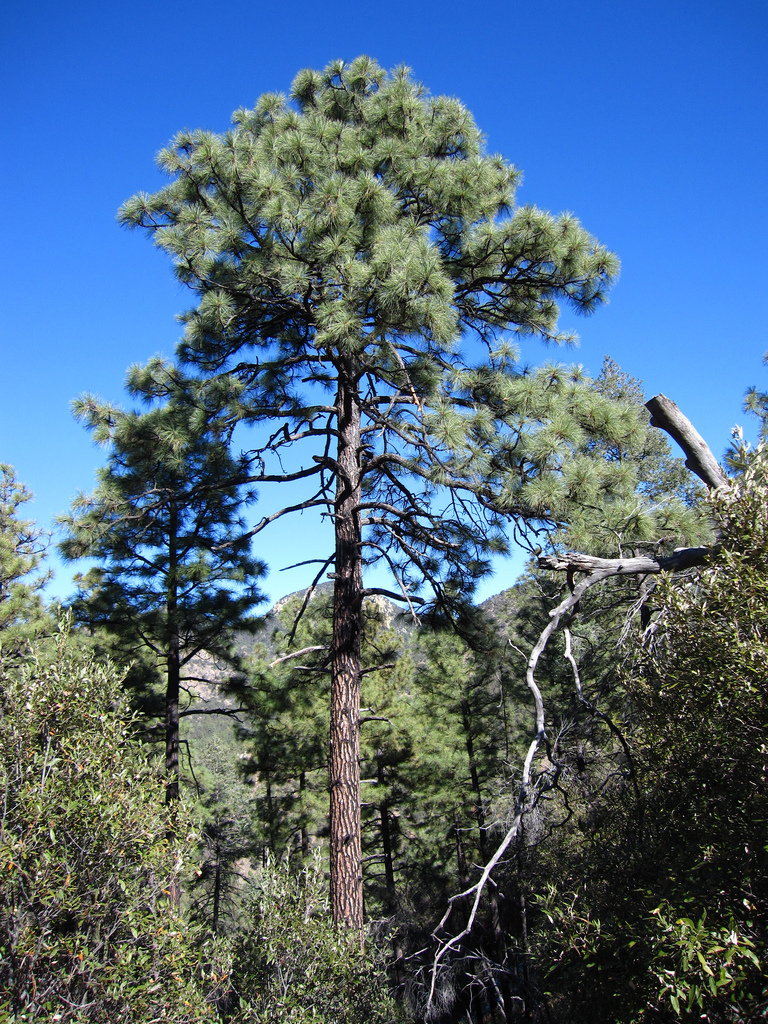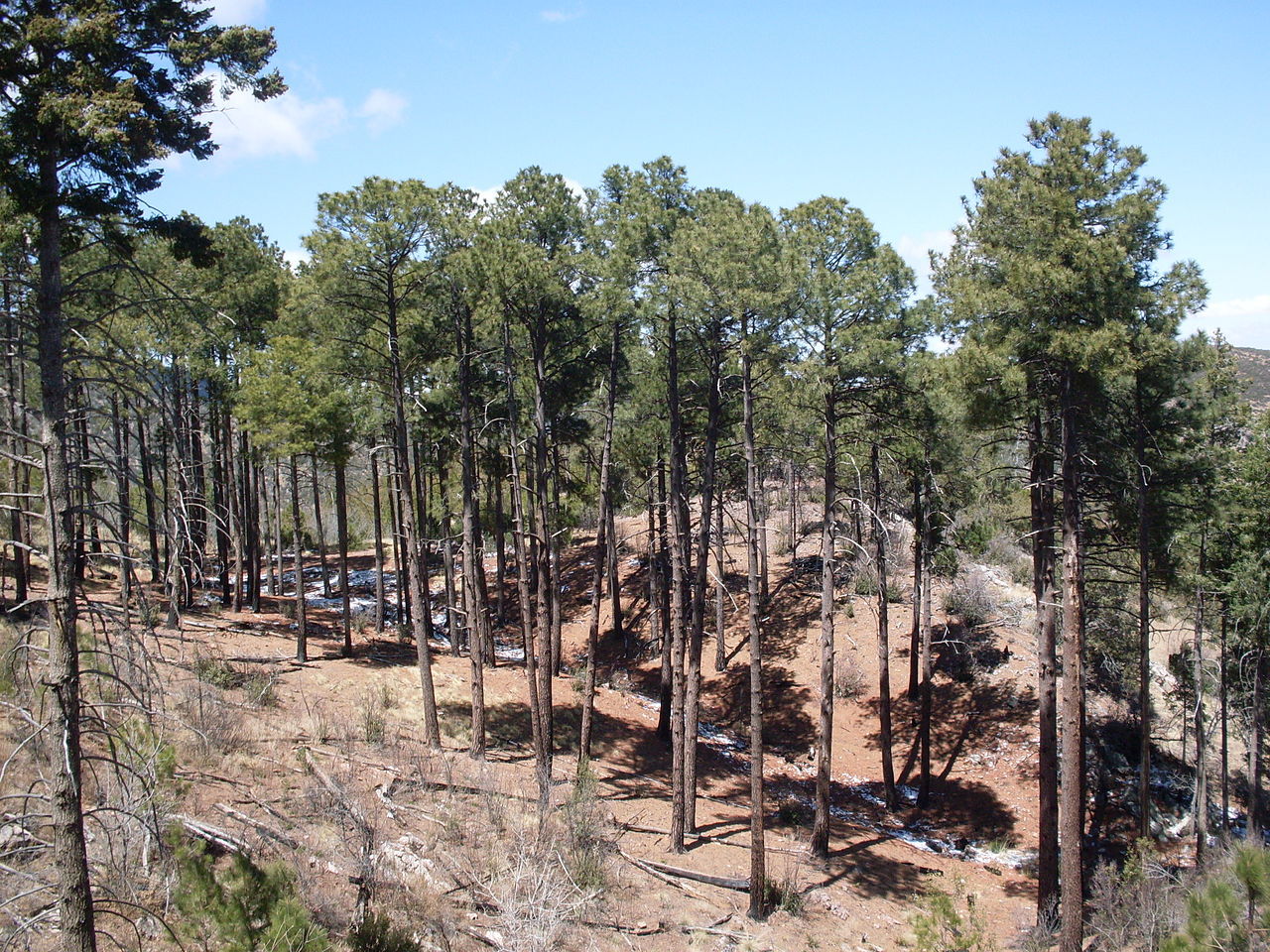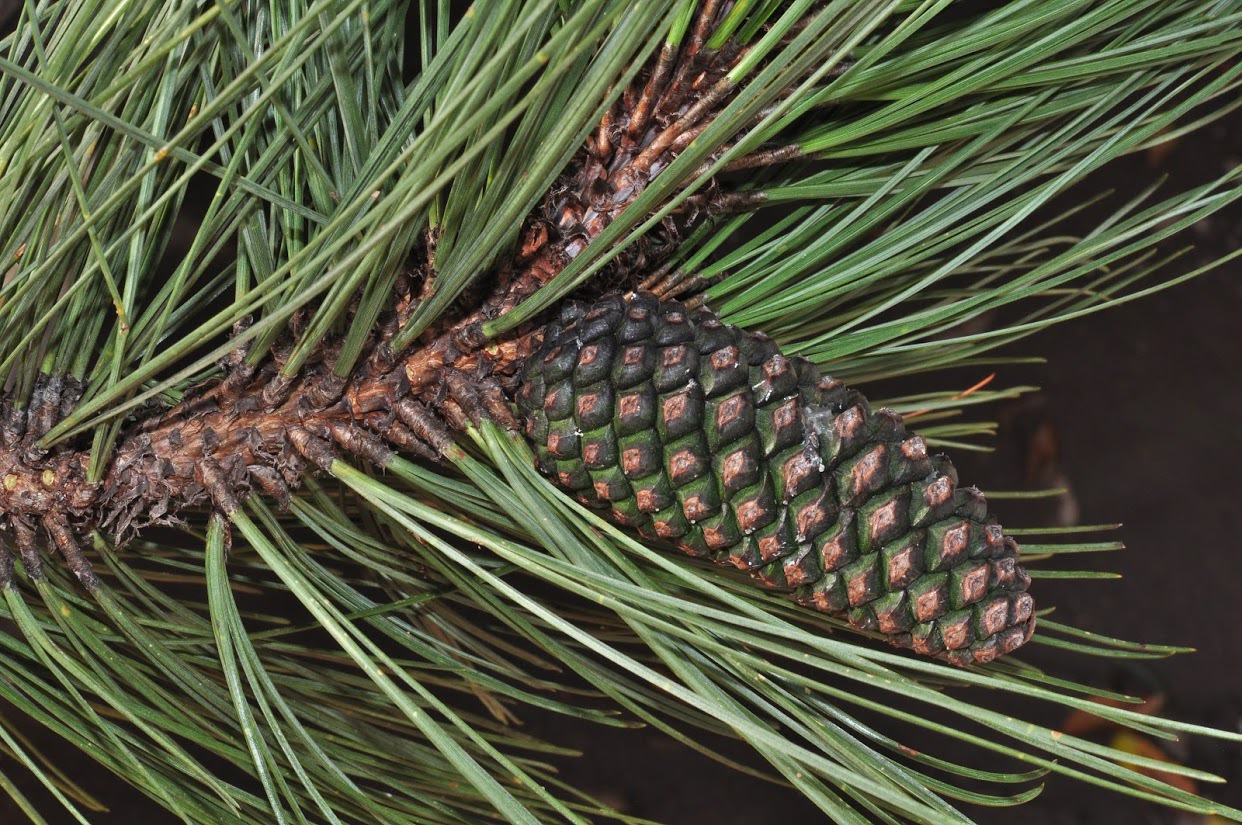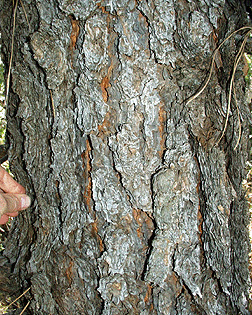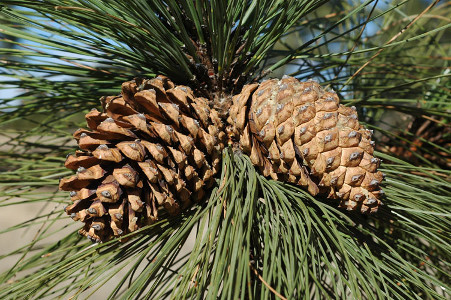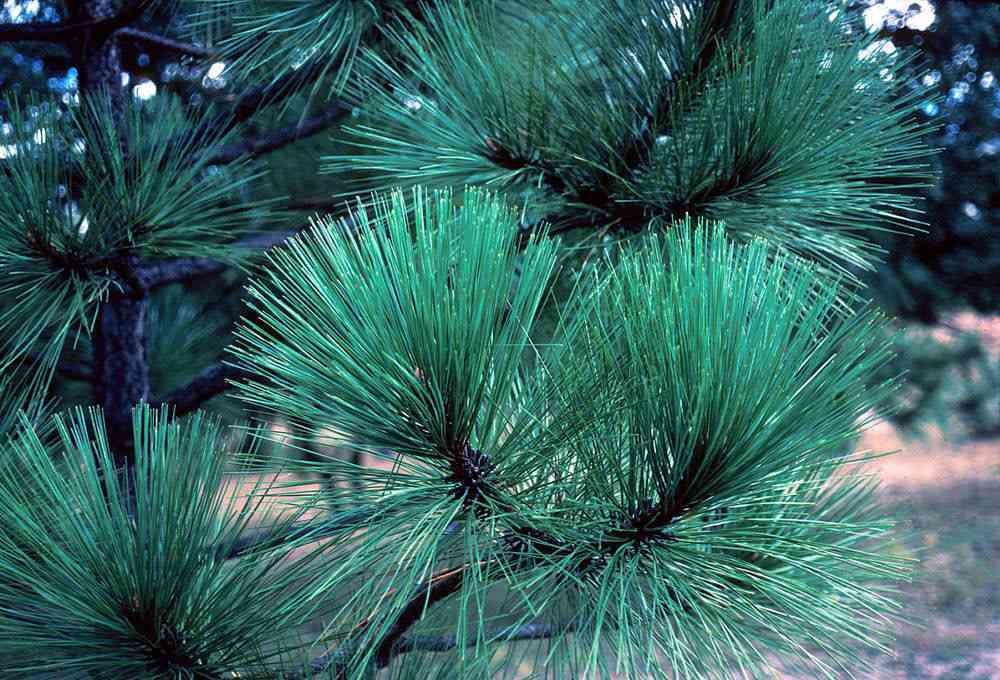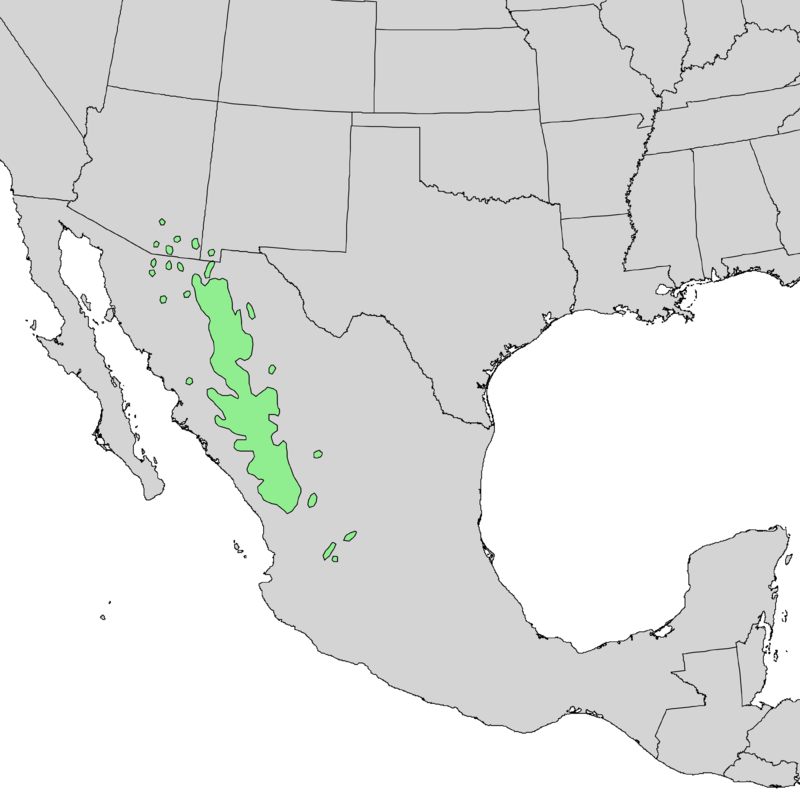subgenus Pinus, section Trifoliae (Duhamel), subsection Ponderosae (Louden).
Pinus engelmannii, first described in 1854 by Elie-Abel Carrière (1818-1896), is commonly known as Apache pine, Arizona longleaf pine. The species name honors Georg Engelmann (1809 - 1884), botanist at the Missouri Botanical Garden in St. Louis, who first described the species under a name that later proved to be unavailable.
Description. Apache pine is an evergreen coniferous species of tree that grows to mature heights of 120 feet (35 m) with a straight trunk up to 24 inches (0.6 m) in diameter, measured at breast height, and an irregularly rounded, rather thin crown.
- Bark is dark brown in color, deeply furrowed at maturity, comprised of narrow, elongated, scaly plates with ridges becoming yellowish in color.
- Branches grow straight to ascending.
- Twigs are stout and rough, measuring circa 0.4 to 0.8 inch (1 - 2 cm) thick, colored pale gray-brown, aging darker brown.
- Foliar buds are ovoid-conic shaped and resinous, measuring up to 0.8 (2 cm) long with pale, fringed scale margins.
- Leaves (needles) are borne in bundles of 3 (occasionally up to 5) per fascicle, spreading and ascending from their point of origin, often drooping, forming a brush at twig tips. Needles persist 2 years on the tree. They are quite long, measuring 10 to 18 inches (25 - 45cm) long and 0.08 inch (2 mm), and colored dull green. All surfaces bear fine stomatal lines, with coarsely serrulate margins, and conic-subulate apices.
- Foliar sheaths measure 1.2 to 1.6 inches (3 - 4 cm) long with a persistent base.
- Pollen cones are cylindric, circa 1 inch (25 mm) long, colored yellow to yellow-brown.
- Seed cones mature 2 years after pollination, shedding seeds and falling soon thereafter. They grow at the branch terminals, are sometimes curved, often asymmetric, lance-ovoid before opening, ovoid when open. Cones measure 4.4 to 5.6 inches (11 - 14 cm) long, colored light dull-brown, and nearly sessile or short-stalked. Apophyses have a rhombic outline, somewhat to quite elongated, strongly raised toward outer cone base, sometimes curved, strongly cross-keeled, and narrowed to a thick, curved, broadly triangular-based umbo, this often producing and outcurved claw.
- Seeds are obovoid shaped with a circa 0.32 to 0.36 inch (8 - 9 mm) body. They are dark brown in color, with an attached wing up to 0.8 inch (20 mm).
In general appearance
Pinus engelmannii much resembles
P. palustris with its short-persistent, long leaves (but in this species drooping) and in its tendency to form a grass stage. It has a deep taproot as do
P. palustris and
P. ponderosa.Distribution. This species is native to USA - southeastern Arizona and southwestern New Mexico and in Mexico - Sonora, Chihuahua, northeastern Sinaloa, Durango, Zacatecas, Nuevo Leon. It grows at elevations of 4,500 to 9,000 feet (1,500 - 2700 m) above sea level, in high and dry mountain ranges, valleys, and plateaus.
Hardy to USDA Zone 8 - cold hardiness limit between 10° and 20°F (-12.1° and -6.7°C).
